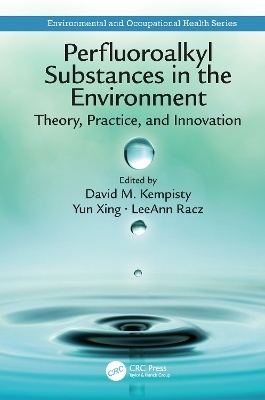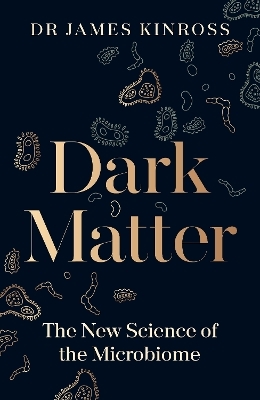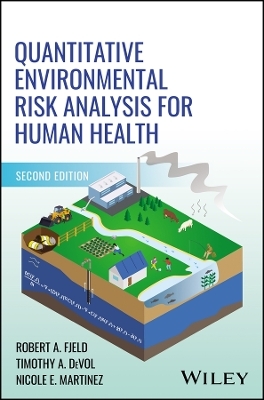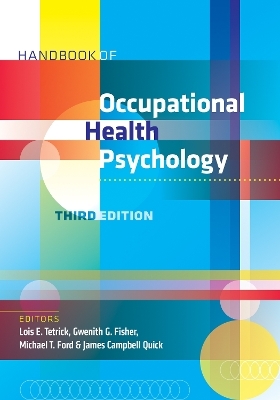
Perfluoroalkyl Substances in the Environment
CRC Press (Verlag)
978-1-138-74777-7 (ISBN)
- Titel wird leider nicht erscheinen
- Artikel merken
Per- and polyfluorinated alkyl substances (PFAS), often referred to as per- (and poly) fluorinated compounds (PFCs), have been used for years in many everyday¾ and some lifesaving¾ products. However, their use has been linked to adverse health effects in humans, a problem compounded by their persistence in the environment. This book discusses the various challenges of PFAS in our environment today, including their historical use as well as their chemical and toxicological properties. It also presents robust discussion of analytical challenges and special considerations in sampling. The work goes on to give practical recommendations for dealing with these compounds in today's dynamic regulatory landscape and includes several chapters on various remediation techniques.
Key Features:
Comprehensive overview of per- and polyfluorinated alkyl substances (PFAS) historical use and chemical/physical properties which help us understand their persistence, transport, and transformation pathways in the environment
In-depth analysis of PFAS toxicology
Detailed descriptions of conventional and state-of-the-art remediation technologies
Practical recommendations for dealing with PFAS in a dynamic regulatory landscape
Robust discussion of important sampling and analytical considerations
Perfluoroalkyl Substances in the Environment: Theory, Practice, and Innovation explores the challenges across the topical areas of regulation and management, toxicology, environmental remediation, and analytical sampling and analysis.Readers will find this text helpful in understanding complexities associated with PFAS and informing management strategies to effectively protect this and future generations.
David M. Kempisty is a bioenvironmental engineer in the US Air Force with over 20 years active duty experience. He is currently serving in the grade of Lieutenant Colonel. In his present assignment, Dave is the Chief of Medical Chemical, Biological, Radiological, and Nuclear operations in the Surgeon’s Directorate at the North American Aerospace Defense Command and US Northern Command at Peterson Air Force Base, Colorado. Previously Dave was an Assistant Professor and the Director for the Graduate Environmental Engineering and Science program in the Department of Systems Engineering and Management at the Air Force Institute of Technology (AFIT). In this capacity, his students and he conducted research into perfluorinated alkyl substances (PFAS) to include both toxicological and remedial aspects of PFAS. He’s been recognized for this research with the 2017 US Environmental Protection Agency’s Office of Research and Development bronze medal for Water Infrastructure and Technologies research. Previous to AFIT, Dave earned his PhD from the University of Colorado – Boulder in Civil Engineering. His dissertation included a chapter on improving PFAS adsorption to granular active carbon. Dave is a licensed professional engineer in the State of Michigan. He received his BS degree from Michigan Technological University and his BS degree from AFIT. In addition to research and policy associated with PFAS, other areas of interest include environmental health issues, sustainability initiatives and improving defense support to civil authorities after natural and man-made disasters. Dave is active in multiple professional societies, has led and presented at international and domestic conferences and has authored many peer-reviewed and trade journal articles. Yun Xing is a postdoctoral research scholar at the Air Force Institute of Technology (AFIT). She holds a BS in Biochemical engineering from Tianjin University (China) and a PhD in Bioengineering from the Georgia Institute of Technology. Her previous work experiences include cancer nanotechnology research at Stanford University and research on PFAS remediation and isomer cytotoxicity at AFIT. Her areas of interest include bionanotechnology, toxicity of emerging materials, pollutants of emerging concern, and characterization of the effects and fate of biocontaminants in the environment. She has authored 19 peer-reviewed journal articles and five book chapters with over 1500 citations. She is a member of several professional associations and has served as a reviewer for a number of journals including the Analyst, ACS Nano and Applied and Environmental Microbiology. LeeAnn Racz is a bioenvironmental engineer in the US Air Force having served at bases across the globe. She currently serves as Commander of the 1st Special Operations Aerospace Medicine Squadron at Hurlburt Field, Florida. Previous assignments have included Chief of Consultative Services at the US Air Force School of Aerospace Medicine as well as assistant professor of environmental engineering and director of the Graduate Environmental Engineering and Science Program in Systems & Engineering Management at the Air Force Institute of Technology. She presently holds the rank of Lieutenant Colonel. She is a licensed professional engineer, certified industrial hygienist, and board certified environmental engineer. She holds a BS in environmental engineering from California Polytechnic State University (San Luis Obispo), an MS in biological and agricultural engineering from the University of Idaho, and a PhD in civil and environmental engineering from the University of Utah. Her areas of interest include characterizing the fate of chemical warfare agents and pollutants of emerging concern in the natural and engineered environments as well as environmental health issues and using biological reactors to treat industrial waste. She has authored dozens of refereed journal articles, conference proceedings, magazine articles, presentations, and two handbooks. She is a member of several professional associations and honor societies and has received numerous prestigious teaching and research awards.
Section 1 – Introduction and Analysis. Fluorosurfactants in Firefighting Foams – Past and Present. Perfluoroalkyl Substance Analysis to Support Site Characterization, Exposure and Risk Management. Understanding Precursor Contributions: The Total Oxidizable Precursor Assay. Section 2 – Regulations. Managing Risk from Perfluorinated Compounds in Drinking Water. Emerging Contaminant Monitoring as a Host Nation Guest: An Environmental Health Professional’s Perspective. Uncharted Waters: Challenges for Public Water Systems Addressing Drinking Water Health Advisory Levels for PFOS/PFOA. Challenges of Managing Emerging Contaminants: Historical Per- and Poly-fluorinated Alkyl Substance Use in the U.S. Air Force. Section 3 – Toxicology. Human Health Risk Assessment of Perfluorinated Chemicals. Perfluoroalkyl Substance Toxicity from Early Life Exposure. PFAS isomers: Characterization, Profiling, and Toxicity. Section 4 – Remediation. Water Treatment Technologies for Targeting the Removal of Poly- and Perfluoroalkyl Substances. Oxidation and Reduction Approaches for Treatment of Perfluoroalkyl Substances. Reactivation of Spent Activated Carbon Used for PFAS Adsorption. Ion Exchange for PFAS Removal. Occurrence of Select Perfluoroalkyl Substances at U.S. Air Force Aqueous Film-Forming Foam Release Sites Other than Fire-Training Areas: Field-Validation of Critical Fate and Transport Properties. A Preliminary Treatment Train Study: Removal of Perfluorinated Compounds from Post-Emergency Wastewater by Advanced Oxidation Process and Granular Activated Carbon Adsorption. Remediation of PFAS-Contaminated Soil. Solid and Groundwater PFAS Remediation: Two Technology Examples. Perfluoroalkyl and Polyfluoroalkyl substances (PFAS) in AFFF impacted groundwater and soil/sediment. Case Study: Pilot Testing Synthetic Media and Granular Activated Carbon for Treatment of Poly- and Perfluorinated Alkyl Substances in Groundwater. Short-chain PFASs: Their Sources, Properties, Toxicity, Environmental Fate, and Treatment.
| Erscheint lt. Verlag | 16.8.2018 |
|---|---|
| Reihe/Serie | Environmental and Occupational Health Series |
| Zusatzinfo | 41 Tables, black and white; 102 Illustrations, black and white |
| Verlagsort | London |
| Sprache | englisch |
| Maße | 156 x 234 mm |
| Themenwelt | Medizin / Pharmazie ► Medizinische Fachgebiete ► Arbeits- / Sozial- / Umweltmedizin |
| Studium ► Querschnittsbereiche ► Klinische Umweltmedizin | |
| Naturwissenschaften ► Biologie ► Ökologie / Naturschutz | |
| Naturwissenschaften ► Chemie ► Technische Chemie | |
| Technik | |
| ISBN-10 | 1-138-74777-7 / 1138747777 |
| ISBN-13 | 978-1-138-74777-7 / 9781138747777 |
| Zustand | Neuware |
| Haben Sie eine Frage zum Produkt? |
aus dem Bereich


